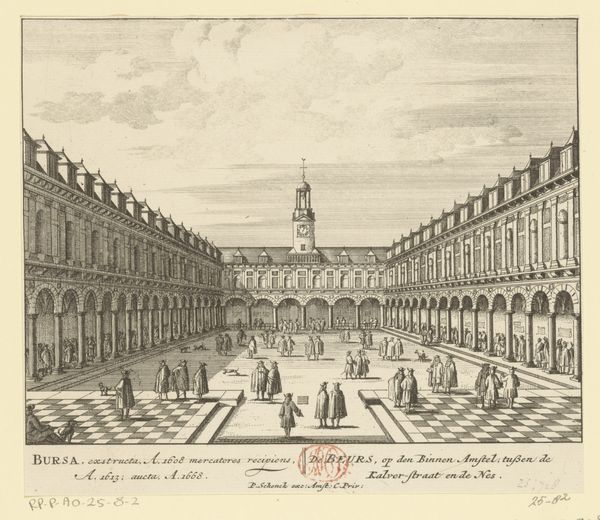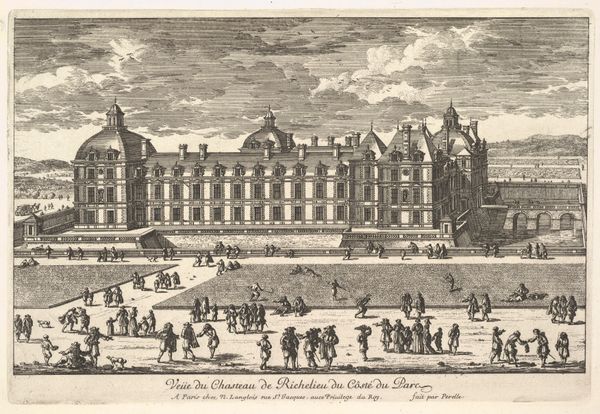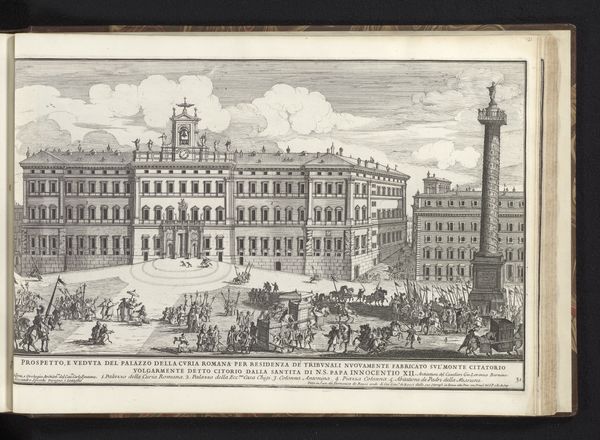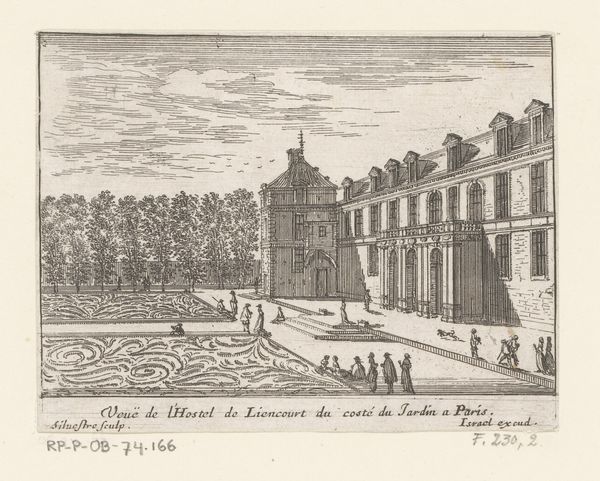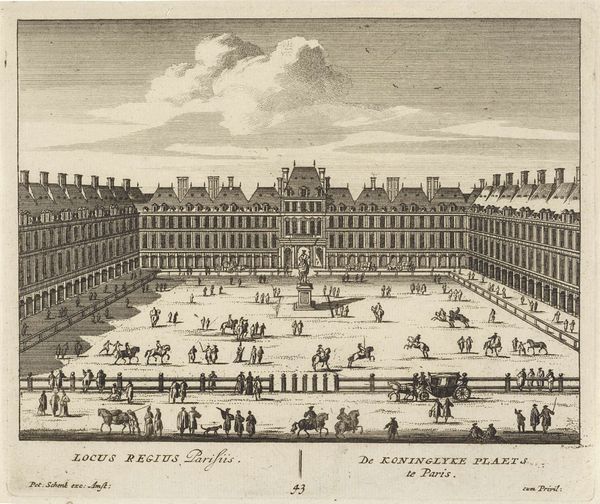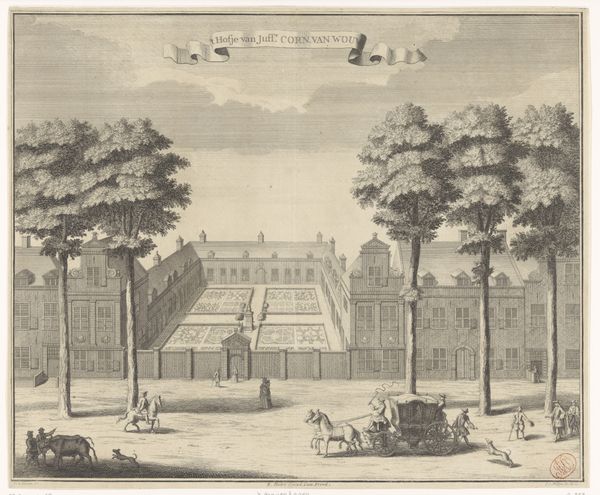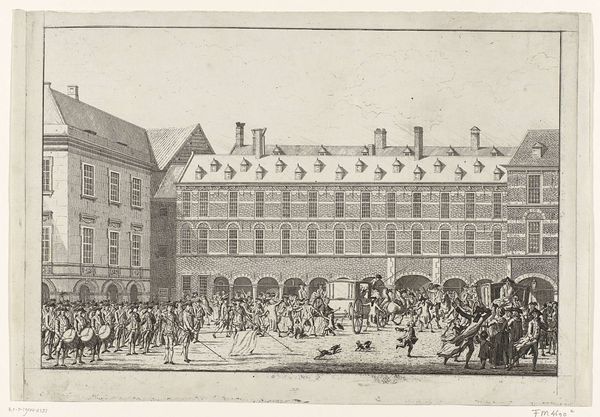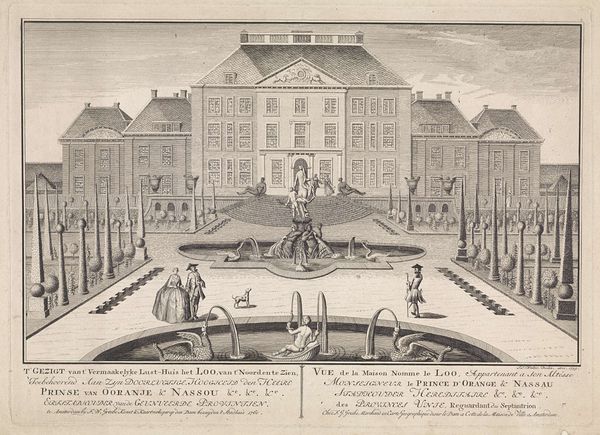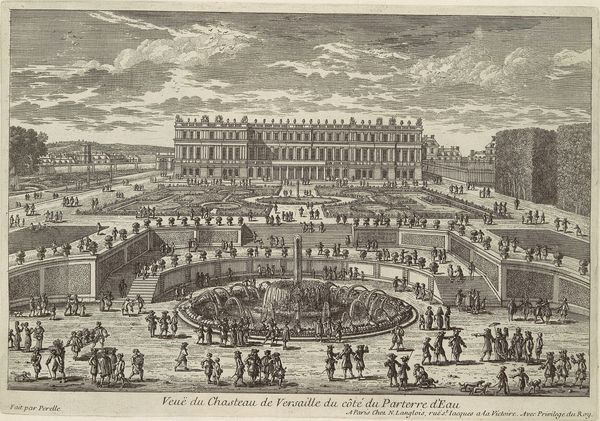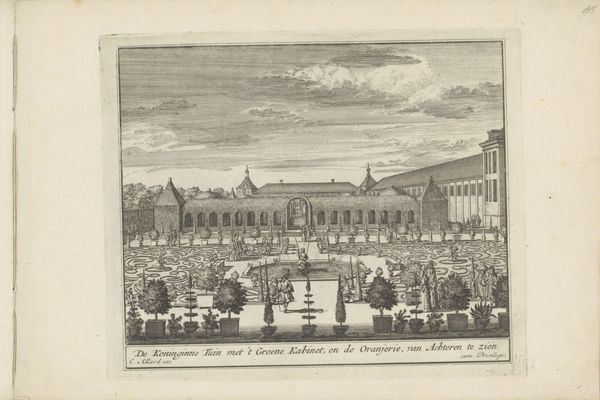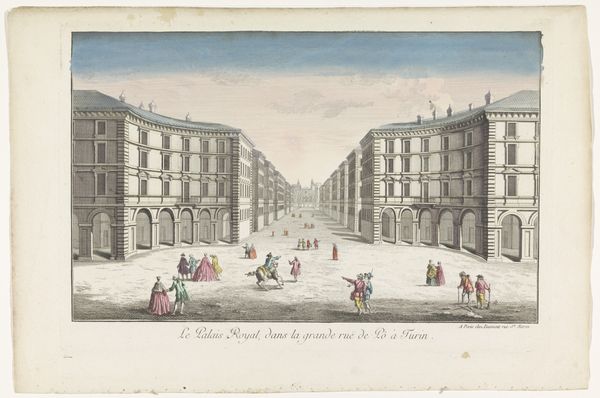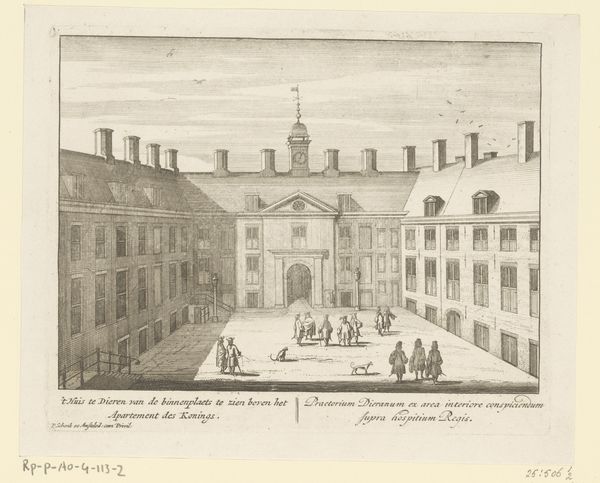
print, engraving, architecture
#
baroque
#
pen drawing
# print
#
old engraving style
#
perspective
#
line
#
cityscape
#
engraving
#
architecture
Dimensions: height 182 mm, width 380 mm
Copyright: Rijks Museum: Open Domain
Jean Marot's etching depicts the Place Dauphine in Paris, offering insights into the social and political climate of 17th-century France. The image presents a meticulously planned urban space, reflective of the absolutist ambitions of the French monarchy. The Place Dauphine, initiated by Henry IV, embodies a vision of centralized power and control through urban design. Marot's print showcases an amphitheater erected within the square, highlighting its function as a stage for public spectacle. This speaks to the era's emphasis on royal display and the performance of power. Consider the architecture, a repetitive facade suggesting uniformity and order. The event within the amphitheater, possibly a carousel or equestrian display, underscores the importance of courtly entertainment and the consolidation of royal authority. To fully understand Marot's image, we need to consider archival records, architectural plans, and period accounts of court life. Only then can we begin to understand the complex interplay between art, power, and society in early modern France.
Comments
No comments
Be the first to comment and join the conversation on the ultimate creative platform.
